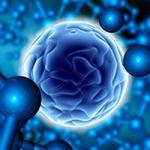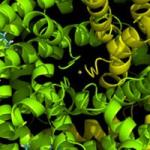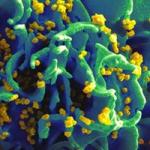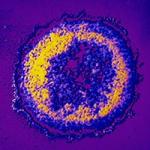
Research Topics
The Protein Expression Laboratory (PEL) studies the structure and function of viral proteins, primarily those of the human immunodeficiency virus (HIV-1) and the hepatitis B virus (HBV). The PEL also studies the interactions of these viral proteins with host proteins.
Most structural biology techniques, especially those for studying the three-dimensional structures of proteins, require large quantities of highly purified, monodisperse, and correctly folded proteins. The PEL uses recombinant DNA techniques to produce proteins both for in-house use and for collaborating scientists. It employs techniques such as analytical ultracentrifugation, UV-CD, NMR, X-ray crystallography, and cryo-electron microscopy to characterize and determine the structures of these proteins and their complexes.
Biography
Paul T. Wingfield, Ph.D. received his doctoral degree from Dundee University, Scotland, in 1975 following his work on the composition and structure of components of the inner membrane of beef heart mitochondria under the supervision of Prof. Peter B. Garland. From 1975 to 1977 he did postdoctoral training with Profs. Alex N. Glazer & Robert J. Delange at the University of California, Los Angeles. Following a position as Staff Scientist in the Biological Structures Division at the European Molecular Biology Laboratory, Heidelberg, Germany (1977 to 1981), Dr. Wingfield served as Department Head of Protein Chemistry, first at Biogen (1981 to 1987) and then at the Glaxo Institute for Molecular Biology (1987 to 1989) in Geneva, Switzerland, followed by a position as Manager of the Department of Molecular Genetics & Protein Chemistry at Pfizer Central Research, Groton, Connecticut (1991 to 1992). Since then, he has served as Laboratory Chief of the Protein Expression Laboratory (NIAMS), and as Acting Laboratory Chief of the Laboratory of Structural Biology Research (NIAMS).
Selected Publications
- Davis DA, Bulut H, Shrestha P, Yaparla A, Jaeger HK, Hattori SI, Wingfield PT, Mieyal JJ, Mitsuya H, Yarchoan R. Regulation of the Dimerization and Activity of SARS-CoV-2 Main Protease through Reversible Glutathionylation of Cysteine 300. mBio. 2021;12(4):e0209421.
- Shoemaker RH, Panettieri RA Jr, Libutti SK, Hochster HS, Watts NR, Wingfield PT, Starkl P, Pimenov L, Gawish R, Hladik A, Knapp S, Boring D, White JM, Lawrence Q, Boone J, Marshall JD, Matthews RL, Cholewa BD, Richig JW, Chen BT, McCormick DL, Gugensberger R, Höller S, Penninger JM, Wirnsberger G. Development of an aerosol intervention for COVID-19 disease: Tolerability of soluble ACE2 (APN01) administered via nebulizer. PLoS One. 2022;17(7):e0271066.
- Eren E, Watts NR, Conway JF, Wingfield PT. Myxococcus xanthus encapsulin cargo protein EncD is a flavin-binding protein with ferric reductase activity. Proc Natl Acad Sci U S A. 2024;121(21):e2400426121.
- Degenhardt MFS, Degenhardt HF, Bhandari YR, Lee YT, Ding J, Yu P, Heinz WF, Stagno JR, Schwieters CD, Watts NR, Wingfield PT, Rein A, Zhang J, Wang YX. Determining structures of RNA conformers using AFM and deep neural networks. Nature. 2025;637(8048):1234-1243.
Related Scientific Focus Areas

Molecular Biology and Biochemistry
View additional Principal Investigators in Molecular Biology and Biochemistry




Microbiology and Infectious Diseases
View additional Principal Investigators in Microbiology and Infectious Diseases
This page was last updated on Tuesday, November 4, 2025